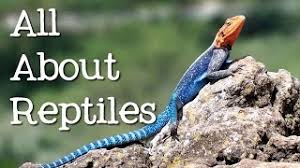What is the definition of a reptile?
Reptiles are a class of animals that includes snakes, lizards, turtles, crocodilians, and tuatara. They are cold-blooded, which means they rely on external sources of heat to regulate their body temperature, and they typically lay eggs. Reptiles are characterized by their scaly skin, which helps to protect them from the environment and retain moisture. They are found on every continent except Antarctica and play important roles in many ecosystems, serving as predators, prey, and important indicators of ecosystem health.
Reptiles are air-breathing vertebrates covered in special skin made up of scales, bony plates, or a combination of both.
About Reptiles
They include crocodiles, snakes, lizards, turtles, and tor- toiles. All regularly shed the outer layer of their skin. Their metabolism depends on the temperature of their environment.
Unlike birds and mammals, reptiles do not maintain a constant internal body temperature. Without fur or feathers for insulation, they cannot stay warm on a cold day, and without sweat glands or the ability to pant, they cannot cool off on a hot one. Instead, they move into the sun or into the shade as needed. During cooler parts of the year they become inactive. Because of their slow metabolism and heat-seeking behavior, reptiles are cold-blooded.
Reptile reproduction also depends on temperature. Only boas and pythons give birth to live young. The other species lay their eggs in a simple nest, and leave. The young hatch days to months later. The soil temperature is critical during this time: It determines how many hatchlings will be male or female. Young reptiles can glide, walk, and swim within hours of birth. Reptiles first appear in the fossil record 315 million years ago and were the dominant animals during the Mesozoic era, which lasted for 270 million years until the extinction of the dinosaurs.
Reptiles are often classified into four main groups: Testudines (turtles and tortoises), Squamata (snakes and lizards), Crocodilia (crocodiles and alligators), and Rhynchocephalia (tuatara).
Reptiles are ectothermic, meaning they cannot generate their own body heat like mammals and birds do. Instead, they rely on basking in the sun or seeking shade to regulate their body temperature.
Reptiles have lungs for respiration, although some species can also absorb oxygen through their skin. Some reptiles can hold their breath for long periods of time, such as sea turtles that can stay underwater for several hours.
Many reptiles have specialized adaptations that help them survive in their environments. For example, chameleons have long, sticky tongues that they can use to catch insects, while snakes have hinged jaws that allow them to swallow prey whole.
Reptiles have been around for a very long time, with the earliest known reptiles dating back to the Carboniferous period over 300 million years ago. Today, there are over 10,000 species of reptiles in the world.
What is the definition of a reptile?
Some reptiles are kept as pets, although it's important to research their care requirements and make sure they are legal to own in your area before getting one as a pet. Some species of reptiles are also threatened or endangered due to habitat loss, overhunting, and other factors, so it's important to support conservation efforts to help protect them.









0 Comments